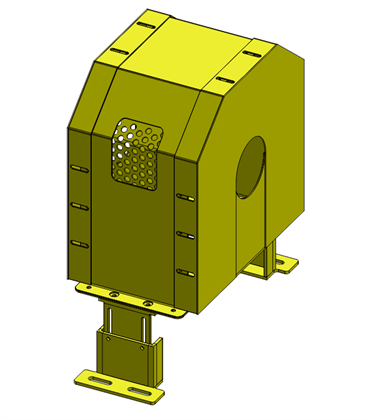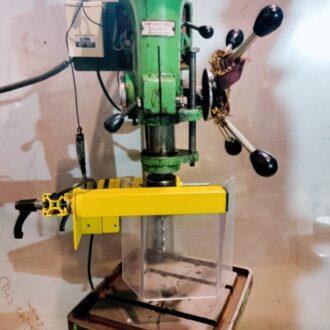

Safety guards, also known as machine guards or equipment guards, are physical barriers or protective devices designed to prevent contact with hazardous areas of machinery or equipment. These guards are essential for protecting workers from potential injuries caused by moving parts, electrical hazards, flying debris, and other dangers present in industrial or workplace environments. Here are some key aspects of safety guards:
Types of Guards:
- Fixed Guards: These guards are permanently attached to the machinery or equipment to enclose hazardous areas and prevent access to moving parts or other dangers.
- Adjustable Guards: Adjustable guards allow for flexibility in their positioning to accommodate different sizes of materials or machinery.
- Interlocking Guards: Interlocking guards are equipped with safety interlocks that automatically shut off the machine when the guard is opened or removed, preventing operation while the guard is not in place.
- Self-Adjusting Guards: Self-adjusting guards move with the machinery to maintain a safe distance between the operator and the hazardous area.
- Barrier Guards: Barrier guards create a physical barrier between the operator and the hazardous area, typically using materials such as wire mesh, plastic, or polycarbonate.
Safety Compliance:
- Occupational health and safety regulations often require safety guards to ensure compliance with safety standards. These regulations may specify the type of guards required, their design, and installation requirements.
- Compliance with safety standards such as those set by organizations like the Occupational Safety and Health Administration (OSHA) in the United States or the Health and Safety Executive (HSE) in the United Kingdom is crucial for maintaining a safe work environment.
Design Considerations:
- Safety guards should be designed to effectively prevent access to hazardous areas while allowing for visibility of the operation and maintenance tasks.
- Guards should be made of durable materials capable of withstanding impact and wear over time.
- Proper ventilation should be considered to prevent overheating of machinery while maintaining safety.
Training and Awareness:
- Proper training should be provided to workers on the use of safety guards, including their purpose, proper operation, and maintenance.
- Awareness campaigns and signage should be used to remind workers of the importance of using safety guards and following safety procedures.
Regular Maintenance and Inspection:
- Safety guards should be regularly inspected for damage, wear, or malfunction.
- Maintenance schedules should be established to ensure that guards are properly maintained and repaired or replaced as needed.
Integration with Safety Systems:
- Safety guards are often integrated with other safety systems such as emergency stop buttons, safety sensors, and warning alarms to provide comprehensive protection against accidents.
Leave a Reply
Related Products
You Might Like Also

chain belt drive guard
V Belt/Chain Drive guards fully enclosed V-Belt Safety Guards, gear drive, and belt drive power transmission system to prevent access to the pinch points around the conveyor belts, fan drives, blower drives, compressor, grinder, and crusher equipment. It helps to keep safe worker/operators around the drive from entanglements Read More

pump coupling safety guard
The pump coupling Guard prevents access to exposed pinch-points around couplings and rotating shaft applications. This guard is designed for the 360 degrees guarding concept. These guards are ANSI/OSHA compliant. Read More

bench grinder machine safety guard
bench grinder machines are critical to protect operators from potential hazards such as flying debris, sparks, and accidental contact with the grinding wheel. Read More

Lathe machine safety guard
r lathe machines are essential to protect operators from potential hazards such as flying debris, rotating parts, and accidental contact with moving components. Read More

drilling machine safety guard
Drilling machine safety guards are crucial for protecting operators from potential hazards when using a drilling machine. These guards help prevent accidents and injuries that can occur due to contact with rotating drill bits, flying debris, or other moving parts of the machine. Read More

safety fence industrial
Perimeter machine guards refer to a barrier placed around a work area where an automated piece of equipment-like a robotic arm-performs a function. IES offers a wide range of perimeter guarding solutions for customers, We have modular safety panels made of Mild steel, SS 304, SS 316, We also provide a perimeter guarding solution in polycarbonate panel (PC) for high durability and visibility. Read More













